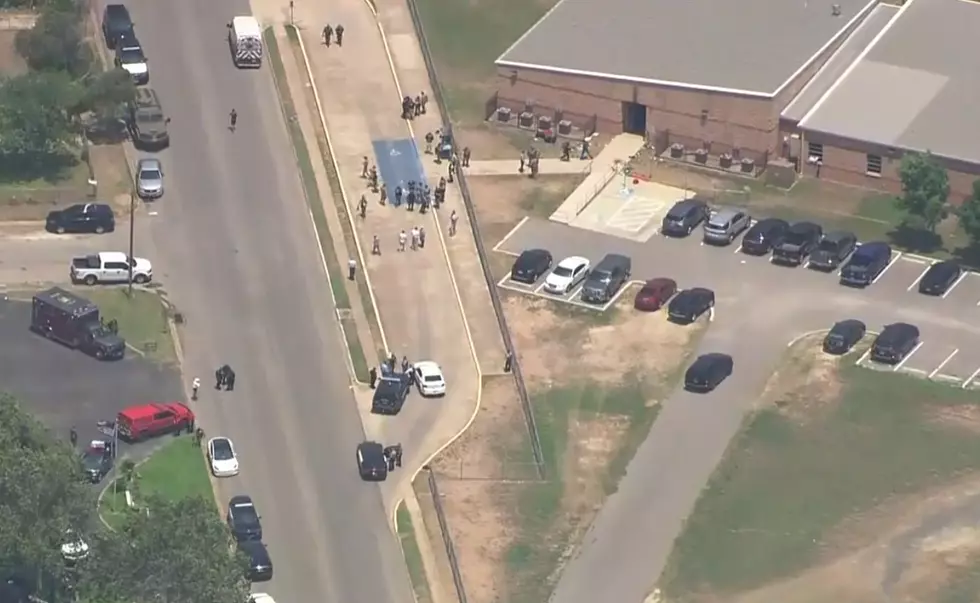
How Did Media Coverage Affect 251 Mass Shootings in 217 Days?
According to USA Today, the shooting in Dayton, Ohio is the 251st shooting in the United States this year. Considering we are only 217 days into the year, that means we have had about 1.15 shootings per day. The big question is why? There are many factors that must be examined to explain this tragic phenomenon in the U.S. The number of guns per capita in the United States and culture are major factors in comparing the number of shootings in the United States to the rest of the world. However, there is a theory researchers have studied that explains why these tragic events seem to come about in clusters.
For an explanation, we will look into the Werther Effect, which is a way to describe a spike in suicide in a particular amount of time. With the spike in mass shootings, studies have looked to this effect as a parallel. The Werther Effect was looked at after the popular Netflix series 13 Reasons Why aired. Many feared the show would increase the suicide rate in teens and young adults. According to The New York Times, "...[A] study published in the Journal of the American Academy of Child and Adolescent Psychiatry found that suicide rates spiked among boys aged 10 to 17 in the month after the release of the first season. That month, April 2017, had the highest overall suicide rate for boys in that age group for the past five years, the study found."
The Werther Effect, also known as copycat suicide, is based on the increase in suicides after the publication of the novel The Sorrows of Younger Werther by Johann Wolfgang von Goethe in 1774. Some researchers believe that teens and young adults who are contemplating suicide will get ideas on the specific manner of doing so by reading about or seeing other suicides. According to multiple publications, many reports on suicide will avoid the details to prevent such a phenomenon.
Many times we see both suicides and mass shootings in clusters. This is why the explanation of copycat suicide, or the Werther Effect, is needed to explain clusters in mass shootings. Another term used to explain clusters of shootings is the Contagion Theory or Contagion Effect, which is similar to the Werther Effect in explaining the tragic phenomenon.
According to CNN, over the past week, there have been 34 people killed and more than 50 wounded in 3 separate shootings in the country. The Washington Post examined the Contagion Theory and media's impact back in 2016. The Contagion Theory is not limited to mass shootings, but behavioral patterns overall.
The writer of said article reached out to the FBI about applying the theory to mass shootings, "...FBI officials declined to comment on contagion for this article, a senior investigator in the behavioral-analysis unit has said that 'the copycat phenomenon is real.'"
One of the most infamous mass shootings in the United States is the Columbine Shooting in 1999. Researchers in support of using the Contagion Theory to explain mass shooting clusters looked at the timing of the shooting in defense of their theory. During this period of America history, people were at the start of owning personal computers. Eric Harris and Dylan Klebold posted rants online before murdering 13 people.
If we now fast forward 20 years, "...[The] transmission of violent behavior is faster, wider and permanent. Shooters no longer need to rely on television for attention and notoriety. And they can obsessively study details from previous incidents, imitating and advancing the strange cultural script that the rest of the nation is watching on repeat," states The Washington Post.
As humans, we have a deep need for belonging. We are social creatures that, as a survival instinct, need to belong to a group. When looking at mass shooters this strong desire to belong can sometimes come into play. According to the American Psychological Association, "People who commit mass shootings in America tend to share three traits: rampant depression, social isolation and pathological narcissism..." It is important to note that not all mass shooters exhibit the same behavioral patterns, however many do.
An article published by Dr. Michael Pittaro to Psychology Today stated, "Individuals who commit mass shootings are often described as loners or outcasts, socially awkward, or have distanced themselves from friends and family, suggesting that they do not feel as if they are a meaningful part of any group or community."
Take these characteristics into account, you have a young male who is looked at as a loner and feels as if they have been cast out by society. The use of a male in this example comes from multiple studies showing most mass shooters are male. They continuously see news reports and social media posts about a recent mass shooting. Many times the media focuses more on the shooter than on the victims. Countless reports are focused on profiling the shooter. This young male subconsciously relates to the shooter as the check-list of behavioral and social traits are examined. They too feel the same way. A subconscious connection is made and they have found someone like them in society.
Many times in a social group, people tend to follow similar patterns. If the group is going to engage in any particular activity, the individual feels the need to follow suit to keep belonging to the group. Using this in the idea that humans need to belong and that mass shooters tend to be loners who may find themselves identifying with these shooters; having the reports on the shooter spreads like a contagion and a recipe for tragedy is laid out. It is a virus that spreads and may manifest itself into a cluster of mass shootings as the U.S. has seen over the past few days.
As stated previously, the Contagion Theory is not the only factor that comes into play when explaining why the United States has more mass shooting than everywhere else in the world or why they seem to come in clusters. Arguably, the Contagion Theory is not the most critical and biggest factor. However, it is one that we do need to identify because it does not just limit itself to mass shootings alone. The Contagion Theory can be applied to outbreaks of many kinds, for example the rise in people licking/tampering with products such as ice cream and returning it to the shelf which has been seen over the past month in the U.S. Humans have an innate mob mentality that can become dangerous when other factors come into play.
Taking into consideration the Contagion Theory, the number of guns per capita in the United States and the gun culture in the U.S.; allows researchers to better discuss the issue of mass shootings and ways to prevent them for occurring.
More From SoJO 104.9 FM









